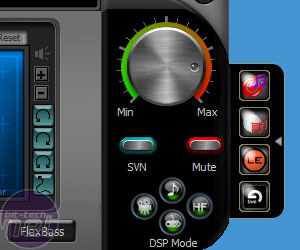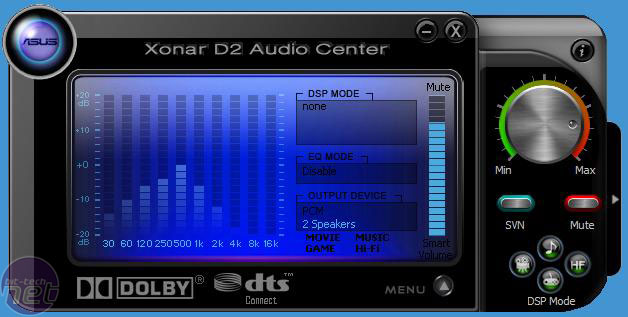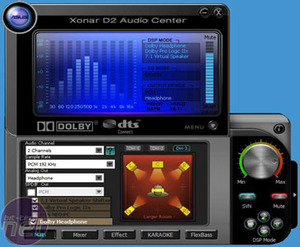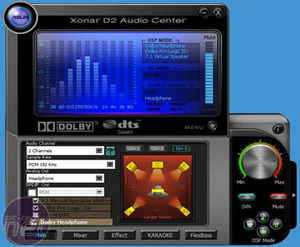
The software Asus has included for fiddling with the sound options is unfortunately the usual "overdone" Hi-Fi-esq interface that sacrifices usability for flash looks. Down the side is a small button letting you launch the additional software included on CD, which we suppose can be more convenient, although we'd expect if it was software frequently used then there would at least be desktop/quick launch shortcuts anyway. It's feels more about claiming integration for the sake of it, reminding you that "you got all this free with your Asus product!" rather than providing an actually useful software extra, however it's an extra that someone might find useful and doesn't impede on the interface in anyway.

The software works surprisingly well in Vista, considering the fun we've had to date with soundcards and Vista, and upgrading to the most recent driver/software package from the Asus website makes the buttons and sliding audio centre skin work much faster than the version that was included on the CD.
However, the interface lacks any real ease of use - the buttons that select all the different modes are small and blend in with the background tones. There's no skin selection, so you can't change it for a high contrast mode or increase the size of the font. The DSP Mode at the top lists what you're running but that again is blue on blue - if you click the images for a large version you can see how badly the JPEG compresses even on a high setting, because all the colours are just so close together.
The CMedia software with the Sondigo Inferno and HT Omega Claro was far easier to navigate and understand what everything did. Since the Asus manual doesn't give an indication what all the extra features do, you'd expect the Windows software to show you but it's just really not the case.
To confuse things further, there is an entirely separate set of DSP Modes under the Mute and SVN buttons which enable certain combinations, which are particularly tailored for the Game, Music, Movie and Hi-Fi modes. Hi-Fi just gives you plain audio without any DSP modes, and the rest enable different combinations depending on the quantity of speakers you've set, but it's by no means a definitive "works in all cases" answer. Again, it's a split between creating the extra usability options but also feeling like features for the sake of features, confusing you more than trying to help.

MSI MPG Velox 100R Chassis Review
October 14 2021 | 15:04











Want to comment? Please log in.